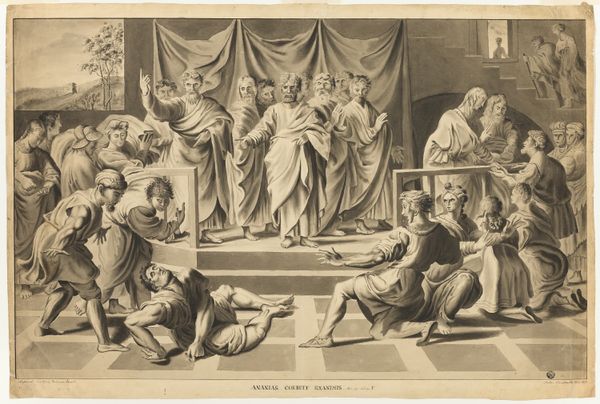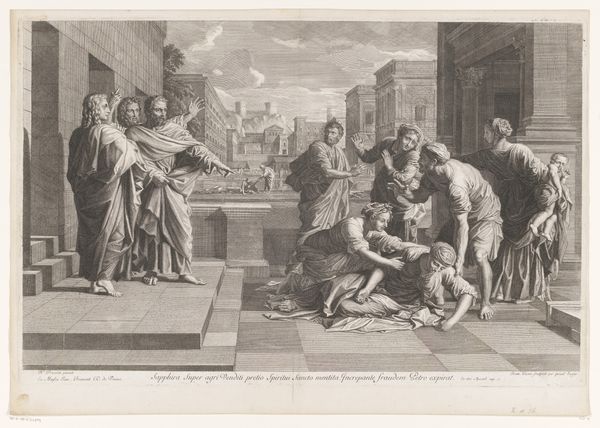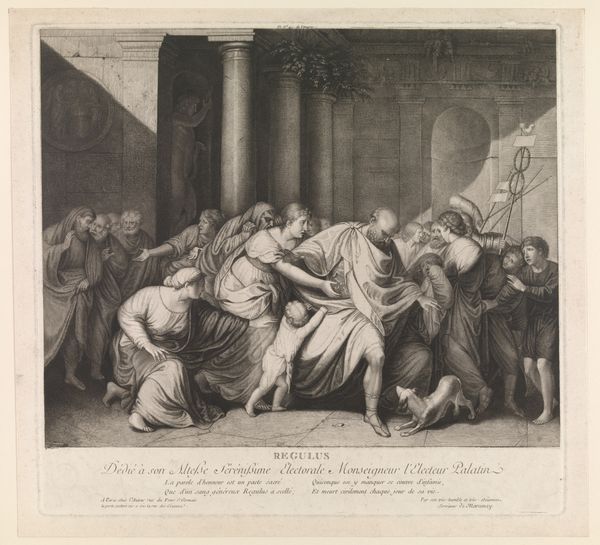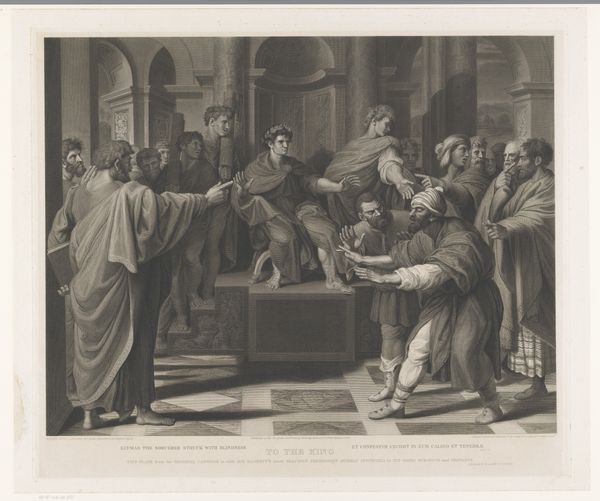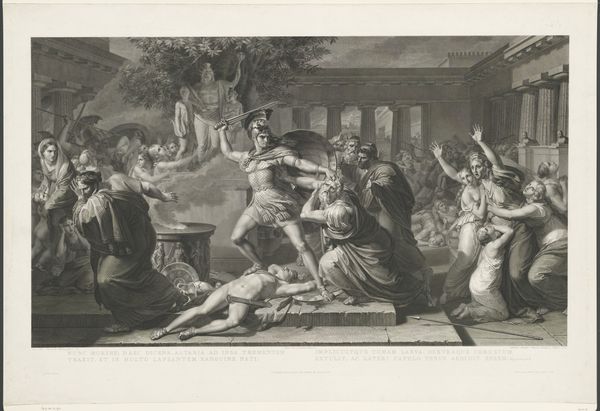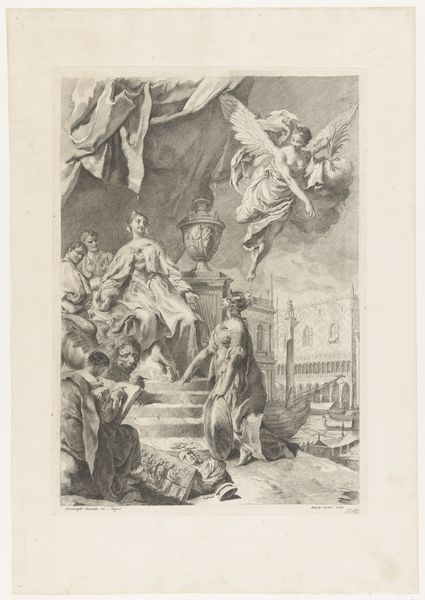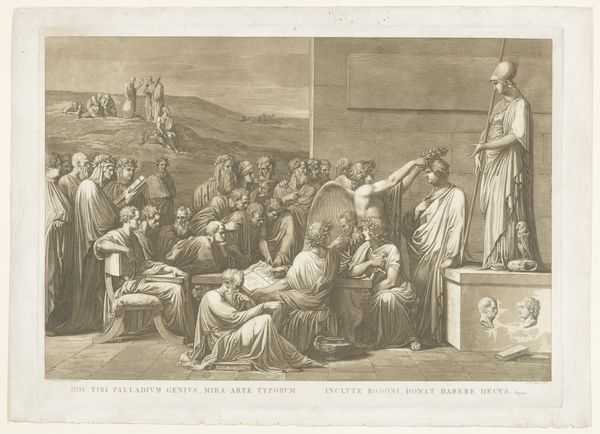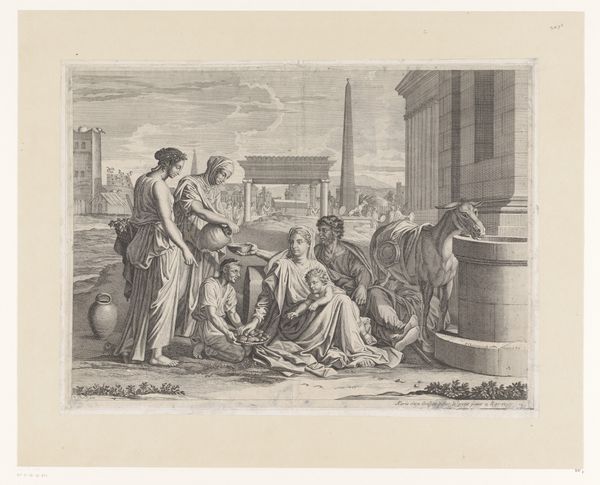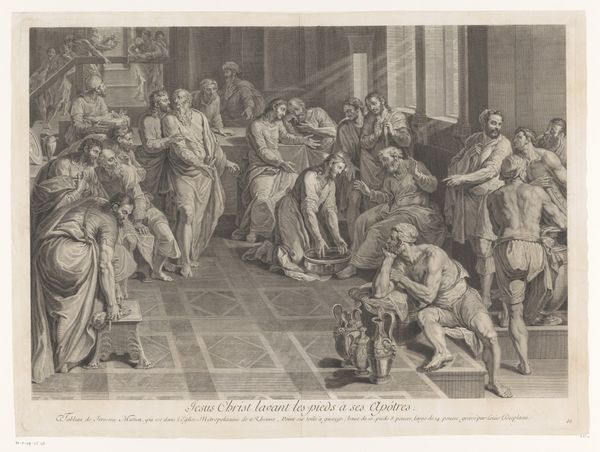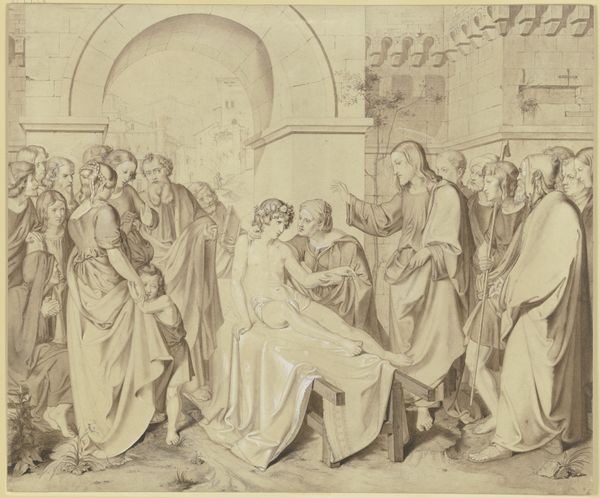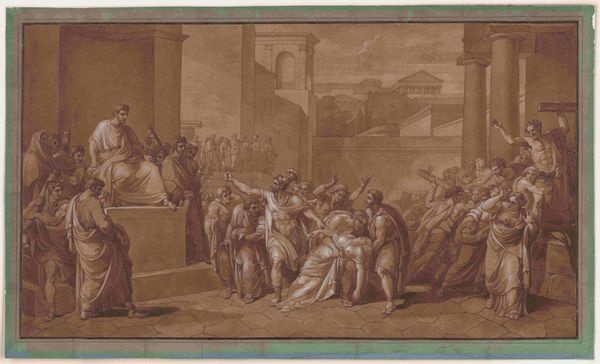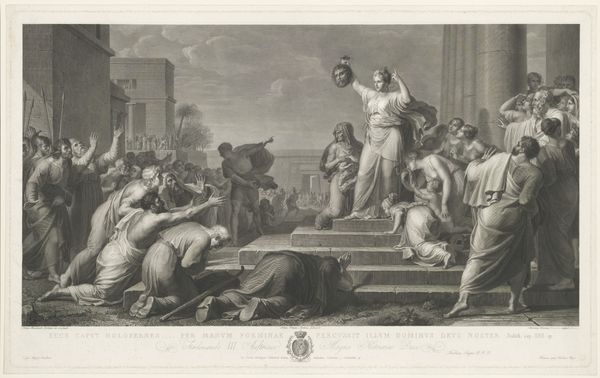
drawing, print, paper, graphite, charcoal
#
portrait
#
drawing
#
narrative-art
# print
#
classical-realism
#
charcoal drawing
#
figuration
#
paper
#
romanticism
#
graphite
#
charcoal
#
history-painting
#
academic-art
Dimensions: 516 × 659 mm
Copyright: Public Domain
Editor: This is John Constable’s "Blinding of Elymas," a charcoal drawing from around 1807. It strikes me as a pretty theatrical composition, almost like a stage play frozen in time. What do you see in this piece, beyond just the surface narrative? Curator: Beyond the literal depiction of the blinding, I see a powerful commentary on power, belief, and societal control. Notice how Constable positions Elymas, the "other," as physically diminished and dependent while those wielding power, symbolized by their faith and actions, remain centered. Consider the colonial context of the early 19th century – how might this scene reflect or perpetuate ideas about dominance and the justification of converting or subduing those with differing beliefs? Editor: So, you're saying the image isn't just about a biblical story, but also about the justification of power structures? I hadn't considered that. Curator: Exactly. The "Blinding of Elymas" is more than just a representation of a biblical story. It embodies the sociopolitical ideologies of its time, particularly those related to colonial expansion and the imposition of specific beliefs on other communities. What kind of feelings do the expressions and the postures of the characters provoke in you? Editor: There's definitely a strong contrast. Elymas looks vulnerable, almost helpless, while the figure who blinds him seems righteous, determined, and empowered. Curator: Precisely. And this contrast is key to understanding how the image might have functioned ideologically. It creates a narrative where domination can be perceived as righteous and just. We can investigate those values as active, potent forces, then as much as now. Editor: This has totally changed how I see the piece. It's not just a historical scene; it's a reflection of ongoing power dynamics. Curator: Indeed. By analyzing its historical and social context, we can uncover layers of meaning within the artwork, enriching our understanding of its impact and relevance. Editor: Thank you. It’s fascinating to look at art as a reflection of the ideologies and sociopolitical conditions that shaped them. Curator: Absolutely. And to keep in mind, artworks are not just artifacts. They take part in these debates.
Comments
No comments
Be the first to comment and join the conversation on the ultimate creative platform.
